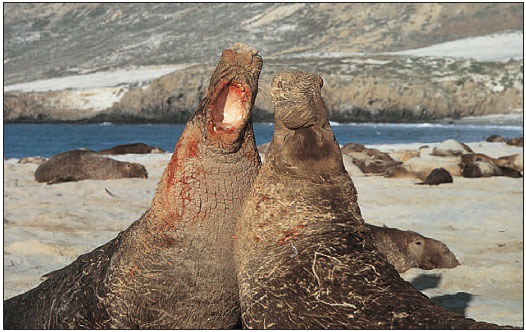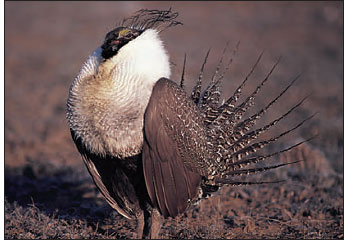Mating Systems
Mating Systems
Animals display a diversity of mating systems. Behavioral ecologists generally classify mating systems by the degree to which males and females associate during mating. Monogamy is an association between one male and one female at a time. Polygamy is a general term that incorporates all multiple mating systems where females and males may have more than one mate. Polygyny refers to a male that mates with more than one female. Polyandry is a system in which a female mates with more than one male. There are specific types of polygyny. Resource defense polygyny occurs when males gain access to females indirectly by holding critical resources. For example, female bullfrogs prefer to mate with males who are larger and older. These males defend territories of higher quality than smaller males because their territories have better temperature regimes for tadpoles to grow or because they are free of predatory leeches. Female defense polygyny occurs when females aggregate and, consequently, are defendable. Thus, when female elephant seals occupy a small island, dominant males can defend and gain access to them for mating relatively easily (Figure 38-18). This situation was previously known as a “harem.”
Male dominance polygyny occurs
when females select mates from aggregations
of males. For example, some
animals form leks. A lek is a communal
display ground where males congregate
to attract and court females.
Females choose and mate with the male having the most attractive qualities
(Figure 38-19). Leks characterize
some birds, including prairie chickens
and sage grouse. In these systems, sexual
selection is often intense,
resulting in evolution of bizarre
courtship rituals and exaggerated morphological
traits.
Animals display a diversity of mating systems. Behavioral ecologists generally classify mating systems by the degree to which males and females associate during mating. Monogamy is an association between one male and one female at a time. Polygamy is a general term that incorporates all multiple mating systems where females and males may have more than one mate. Polygyny refers to a male that mates with more than one female. Polyandry is a system in which a female mates with more than one male. There are specific types of polygyny. Resource defense polygyny occurs when males gain access to females indirectly by holding critical resources. For example, female bullfrogs prefer to mate with males who are larger and older. These males defend territories of higher quality than smaller males because their territories have better temperature regimes for tadpoles to grow or because they are free of predatory leeches. Female defense polygyny occurs when females aggregate and, consequently, are defendable. Thus, when female elephant seals occupy a small island, dominant males can defend and gain access to them for mating relatively easily (Figure 38-18). This situation was previously known as a “harem.”
 |
| Figure 38-18 Two elephant seals, Mirounga angustirostris, fight to establish dominance. Males are much larger than females in this highly polygynous society. |
 |
| Figure 38-19 Male sage grouse, Centrocercus urophasianus, displaying at its lek. |




